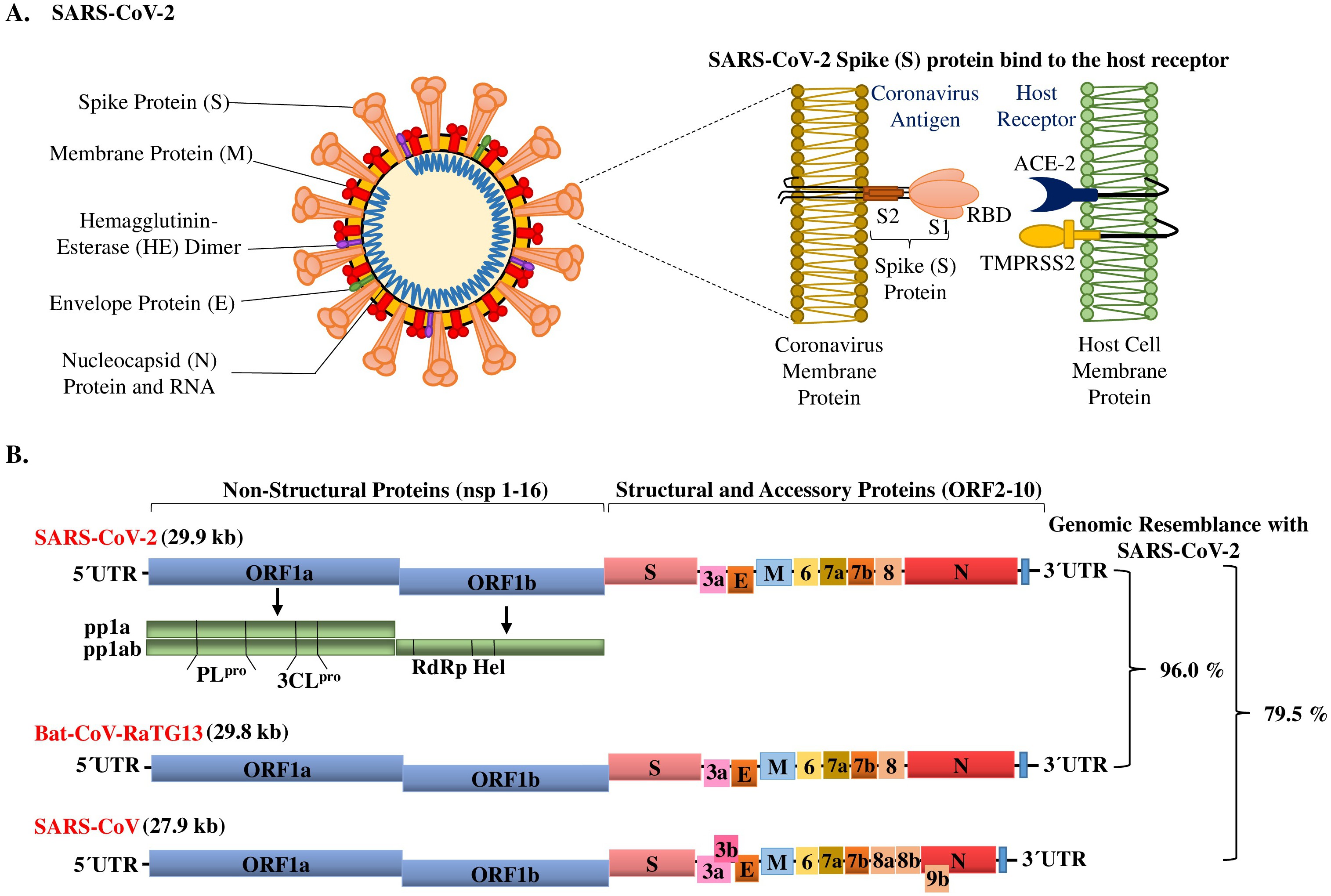Fig. 2. Structure and genome of SARS-CoV-2. A. The left panel shows the structure of SARS-CoV-2. The virion is a spherical particle composed of four structural proteins: spike (S), membrane (M), envelope (E), and nucleocapsid (N). Within the viral envelope is the helical nucleocapsid, which consists of the viral single-strand RNA genome. The hemagglutinin Esterase (HE) is a glycoprotein that mediates the infiltration of SARS-CoV-2. The right panel shows S protein containing a receptor-binding domain (RBD) responsible for attaching the virus to the host cell membrane by recognizing a specific ACE-2 receptor. The RBD domain in the S1 subunit of the S protein binds to the ACE-2 receptor on the host cell followed by S2 mediated fusion of the viral and cellular membrane. The spike protein priming by TMPRSS2 is crucial for the invasion of the host cell membrane by SARS-CoV-2. B. Comparison of the single-stranded RNA (ssRNA) genome of SARS-CoV-2 (29.9 kb) with SARS-CoV (27.9 kb) and BAT-CoV-RaTG13 (29.8 kb) genomes. The 5′-methylated caps contain two-thirds of the CoV genome compared to 3′-polyadenylated tails, which include the open reading frame (ORF) 1a/b replicase polyproteins 1a (pp1a) and pp1ab. However, these are cleaved by papain-like cysteine protease (PLpro) and 3C-like serine protease (3CLpro) into 16 non-structural proteins (nsps), such as the RNA-dependent RNA polymerase (RdRp) and helicase (Hel) that are major enzymes involved in the transcription and replication of CoVs. In addition, the genome encodes the structural proteins (S, E, M, and N) that are essential for virus-cell-receptor binding and virion assembly, as well as other non-structural and accessory proteins.
